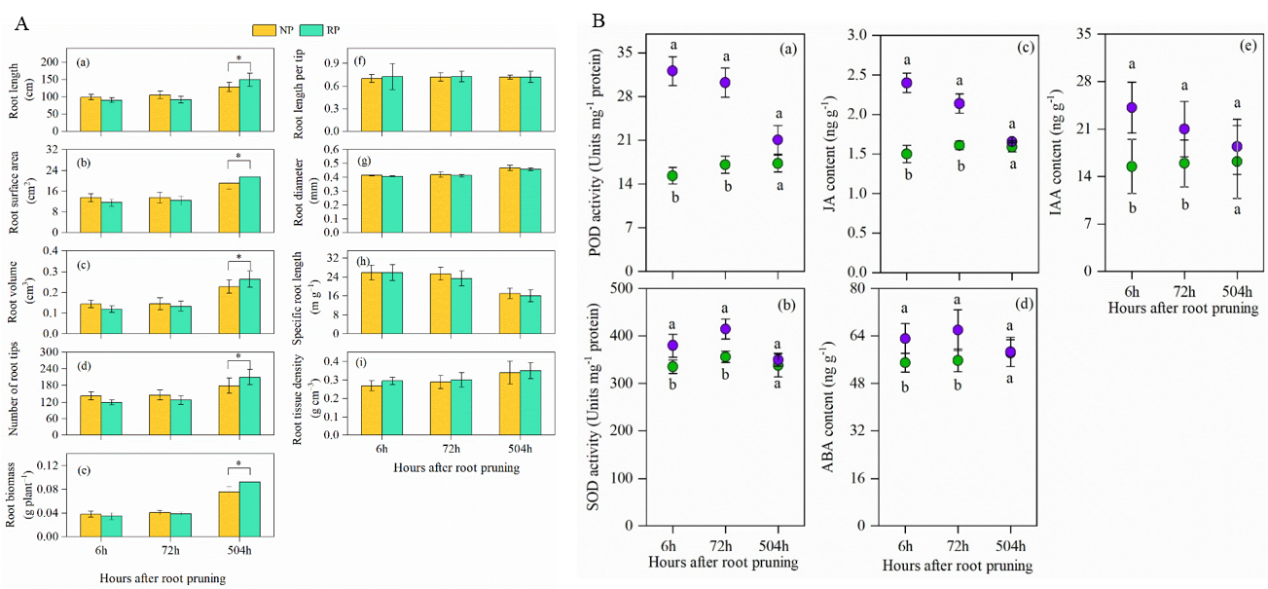An important paper led by Prof. Yang Xitian in the College of Forestry of Henan Agricultural University has recently been published in Journal of Advanced Research entitled “Coordination of root growth with root morphology, physiology and defense functions in response to root pruning in Platycladus orientalis”. A conspicuous tradeoff between root growth and defense functions was observed with time after root pruning in P. orientalis.
Root pruning is a well-known method frequently used to facilitate seedling transplantation in the restoration for degraded or damaged ecosystems. However, little is known about whether and how root growth is coordinated with root morphology, physiology and defense functions following root pruning. Here, we performed a root pruning study for seedlings of P. orientalis, a tree species widely used in forest restoration in north China. A suite of root growth, morphological and physiological traits were measured associated with proteomic analysis at 6, 72 and 504 hours after root pruning. The results showed that root growth lagged significantly behind root physiology following the pruning (Fig. 1). In contrast, root morphology was insensitive to the pruning treatment, irrespective of the early or late time after pruning (Fig. 1). Most importantly, the observed temporal tradeoff between root growth and defense could be related to IAA, potentially activated by the crosstalk between IAA and defense phytohormones such as JA and ABA (Fig. 2). Together, these results provide a holistic understanding of the coordination of root growth with root morphology, physiology and defense in response to root pruning in P. orientalis.

Fig.1 Changes of root growth, morphology and physiology between pruned and unpruned treatments at 6, 72 and 504 hours, respectively.

Fig.2 A conceptual model for P. orientalis roots in response to root pruning
Prof. Yang Xitian was the corresponding author of this paper, Dr. Feng Zhipei and Prof. Kong Deliang were the co-first authors, and Associate Prof. Kong Yuhua and Prof. Zhang Baohong of East Carolina University also participated in the research. This work was funded by the National Natural Science Foundation of China and the Postdoctoral Science Foundation of China.
Link to this paper:https://doi.org/10.1016/j.jare.2021.07.005
Edited by Chen Xi Proofread by Feng Zhipei Authorized by Zhou Hongfei






